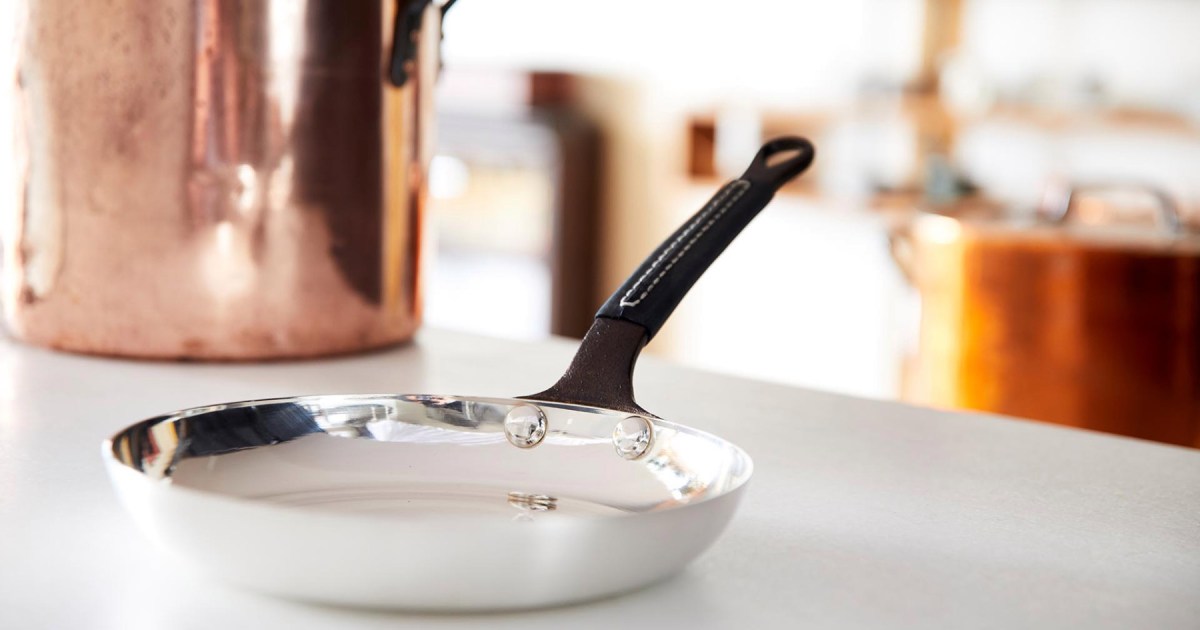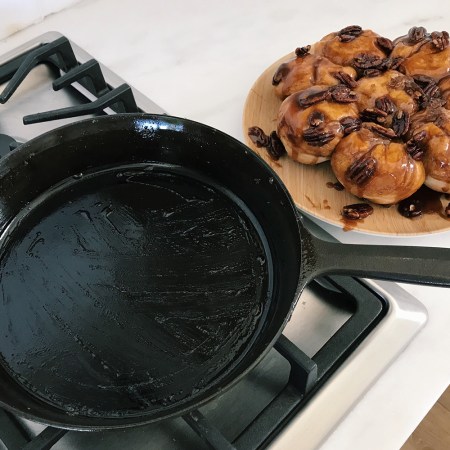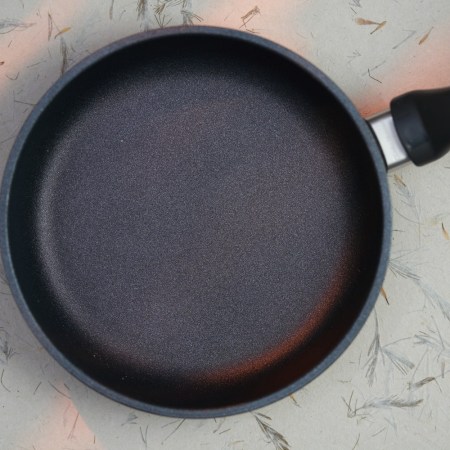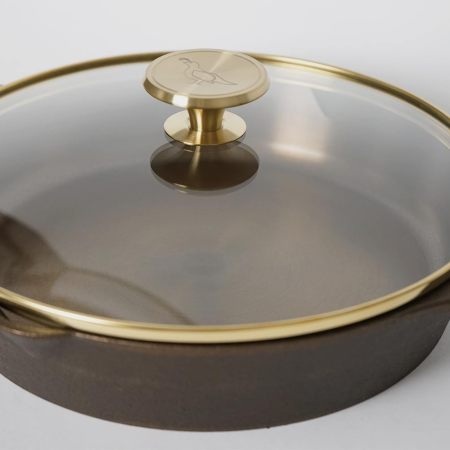Welcome to For What It’s Worth, in which an unbiased expert breaks down the seemingly ludicrous costs of some of our favorite objects.
“You don’t need a silver fork to eat good food,” posited the late, great celebrity chef Paul Prudhomme. And he’s right.
But what about a $9,800 silver saute pan?
That’s the question we placed to Jim Hamann, a Cornell Engineering graduate, coppersmith and founder of the ultra-luxe Duparquet Cookware, who just handcrafted a line of solid sterling silver pans.
(Editor’s Note: The pan pictured above is the fry pan, which is $2800.)
Hamann’s copper pans have a fanbase: he’s created custom cookware for the likes of Alain Ducasse, Lidia Bastianich and Eleven Madison Park. Michelin-star chef testimonials or not, the price tag on this new silver cookware might cause some palpitations. But Hamann insists your meal — and even your bank account — could be greatly enhanced by this silvery cookware.
“It’s the cook’s version of a Rolex watch, Hinckley yacht or Aston Martin automobile,” he says.
So we grilled him on it.
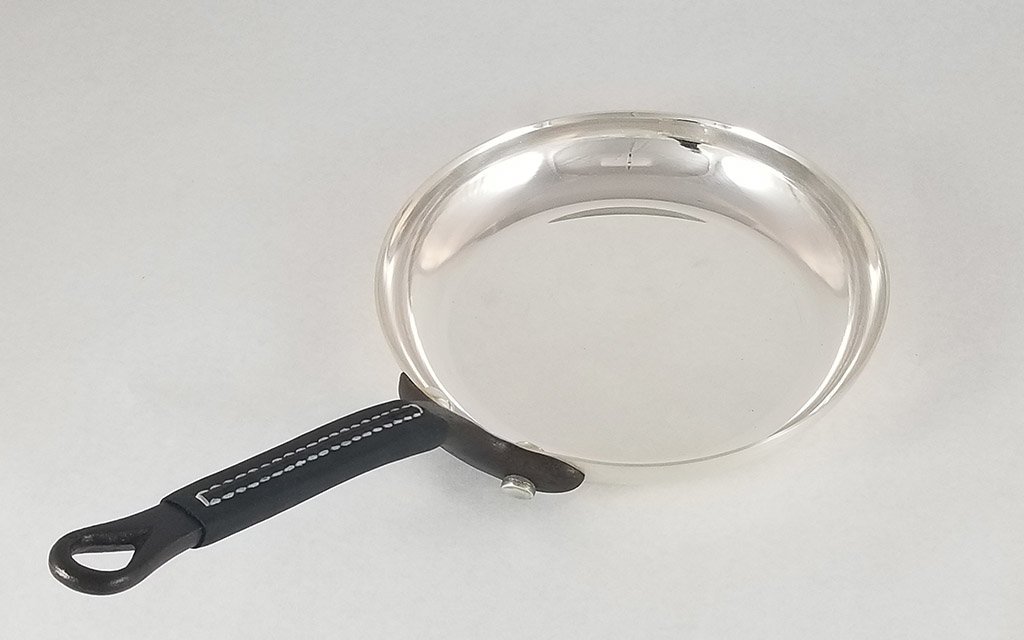
InsideHook: You got your start with copper cookware. What inspired you to try silver?
Jim Hamann: An early 20th-century coppersmith named Joseph Heinrichs made copper cookware and service pieces that were lined with silver instead of the traditional tin. His pieces still exist today and are stamped “Jos. Heinrichs – Pure Copper / Sterling Silver.” After studying the use of silver with cookware, I found silver to be superior to even copper in heat conductivity. In fact, silver is the metal with the best heat conductivity on the entire periodic table — better than gold or platinum. It creates a supremely even heated cooking surface, and provides a cook with very precise control over their desired results. Since silver is the best metal for cooking and it had never been done before, I decided to experiment and ended up creating a first-of-its-kind, 100% solid sterling silver pan.
IH: It’s hard for a home chef to come to terms with this price tag.
JH: Agreed. It is expensive. But each piece is literally made from pounds of silver. It’s a thrill to be able to use, on a daily basis, such a high-performing, luxury product. The fine quality of silver and craftsmanship delivers a long-lasting “tool” that can be used today and passed down from generation to generation. It’s the cook’s version of a Rolex watch, Hinckley yacht or Aston Martin automobile. And the pan is certainly an investment in precious metals. If the price of silver doubles, the value of the pan doubles. As well, the antimicrobial/antibacterial capability of silver has long been known. And there’s no additional lining to worry about or eventually have to replace. The pan is simply polished silver on the interior; it can be restored to its original luster by simply buffing and polishing.
IH: How do you take care of silver cookware?
JH: If you put it to everyday use, it will certainly take on your character and get scuffed and scratched. Higher heats will cause the cooking oils to sear onto the silver, creating a bit of a “seasoning,” making it even more non-stick. All of this is to be expected. For those with the leather-wrapped handle, hand wash with a soft sponge. Without the leather, simply wash in the dishwasher with detergents that do not contain chlorides (another benefit over copper). Any tarnish can be removed with an everyday silver polish like Twinkle, and if ever needed, the pan can be buffed on a wheel and polished to its original luster.
IH: Couldn’t I get the same benefits out of your silver-lined copper cookware?
JH: The cooking results using the silver-lined copper will be very similar. The difference will come in the maintenance. First, copper pans of any kind should not go in the dishwasher. The solid silver pieces can go in the dishwasher, provided they do not have the leather-wrapped handle. Second, any tin or silver lining on a copper pan will eventually wear away and need to be replaced, this is not the case with the silver.
IH: Are there particular foods or dishes that cook well (or better) in silver cookware?
JH: The solid silver and silver-lined cookware can handle higher heats than their tin-lined brethren because the melting point of tin is only about 475 F. Given a dry, high-heat task like searing, the tin lining can and will melt, creating a bit of a mess. So tin-lined copper should not be used for high-heat tasks like searing a piece of tuna, a scallop or a filet mignon. However, the silver and silver-lined copper pieces can certainly handle these higher heat tasks because silver melts well above cooking temperatures (~1700 F).
IH: Is handcrafting a silver vessel different from handcrafting your copper vessels?
JH: Other than the nervousness of working with such a high-value material, the process is similar. In both cases, the forming of the pan is done by spinning on a lathe. For the solid silver pans, I make the rivets from a solid bar of sterling silver. The rivet shank is cut on a small lathe and then the head is formed. These silver rivets are pounded on an anvil, affixing the handle to the pan in the same fashion as the copper pans. Since the silver pans have no lining on the cooking surface, the interior is simply finished by polishing to a high shine.
IH: What’s the best inexpensive piece of cookware you own?
JH: In my kitchen I am constantly reaching for my bamboo “spoontula.” My Italian wife handles most things savory, so I am relegated to the sweet and often find myself making a quick crème anglaise that requires constant stirring. These hybrid spatula/tasting spoons have differently contoured surfaces and edges to keep everything in motion (of course in my copper pans!) so as not to overheat, because the sauce will break. And the lightly oiled bamboo finish does not impart the flavor of wood into my tastes.
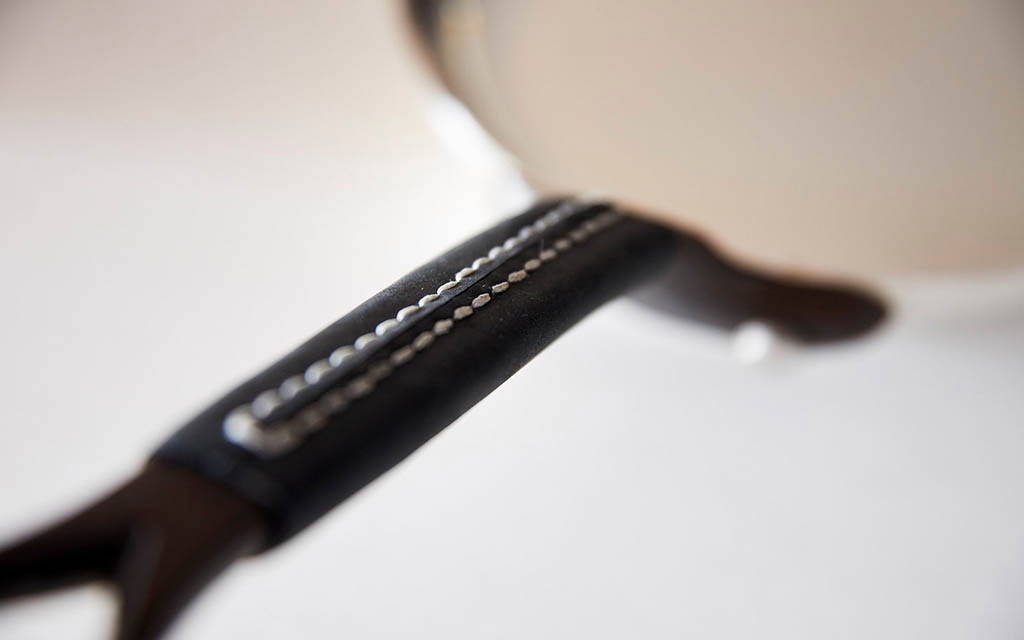
Note: The solid silver pieces can be customized with engraving, a hand-stitched leather handle and presented in wooden gift box designed by a student from the Rhode Island School of Design (the pans are handcrafted in Rhode Island). Prices for the silver pans range from $2,800 for the 9″ solid silver fry to $9,800 for the large 12.5″ saute.
Join America's Fastest Growing Spirits Newsletter THE SPILL. Unlock all the reviews, recipes and revelry — and get 15% off award-winning La Tierra de Acre Mezcal.
